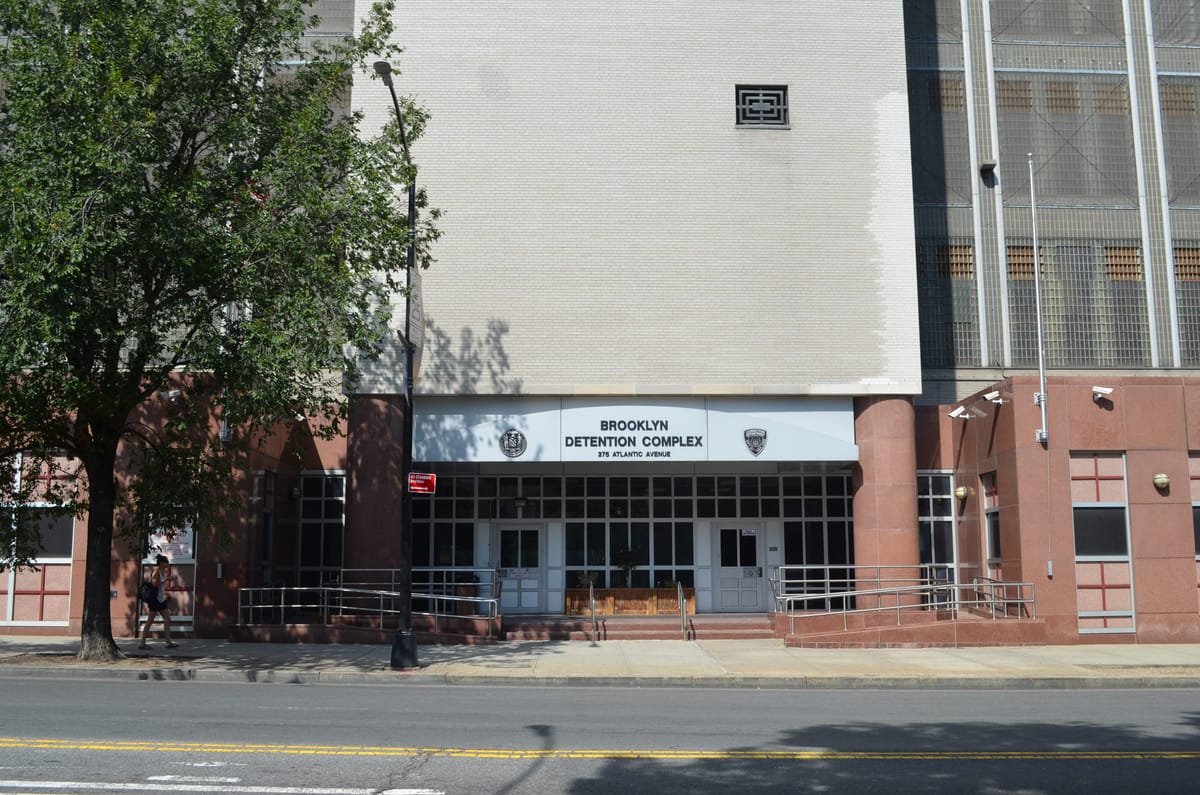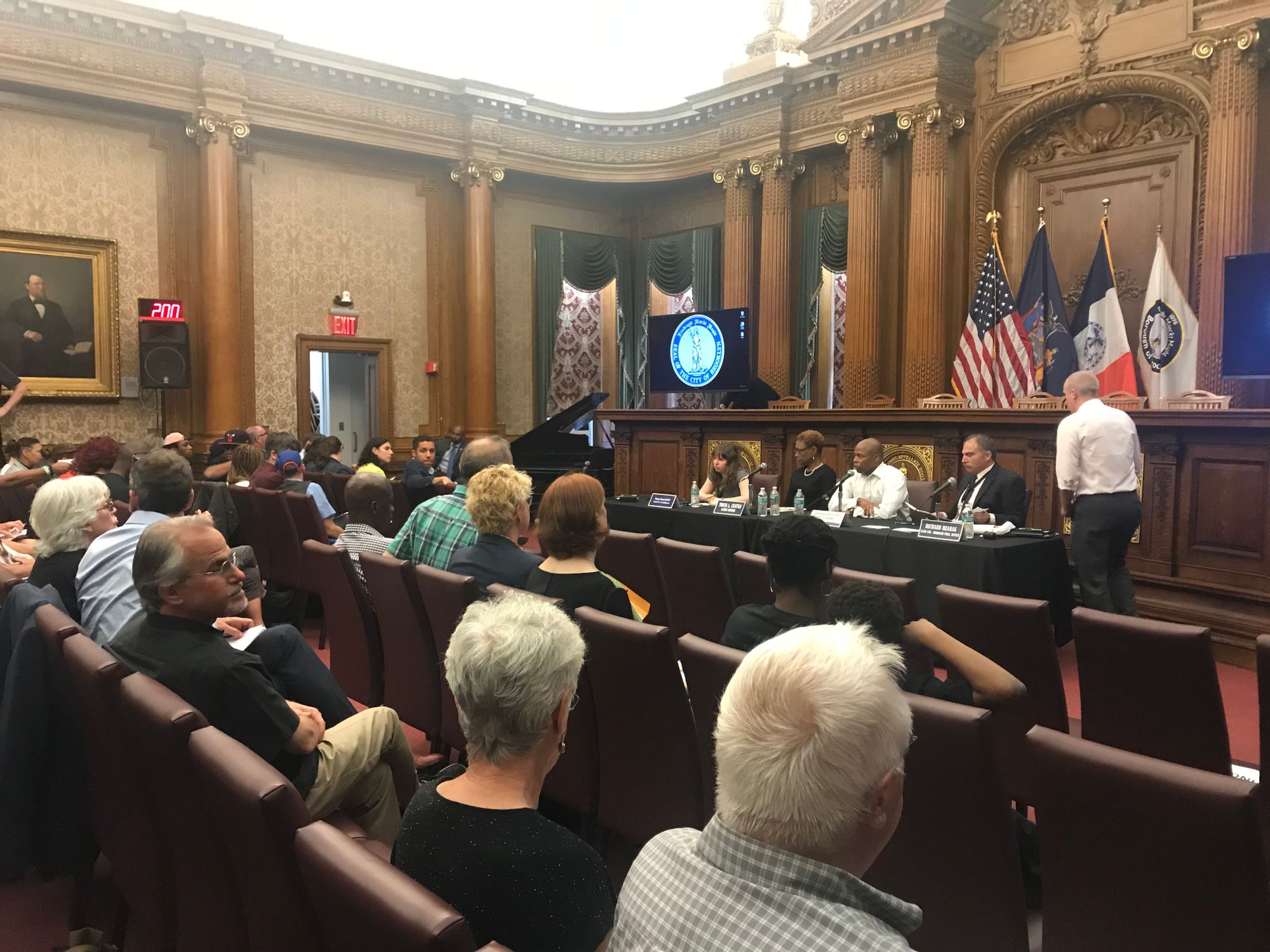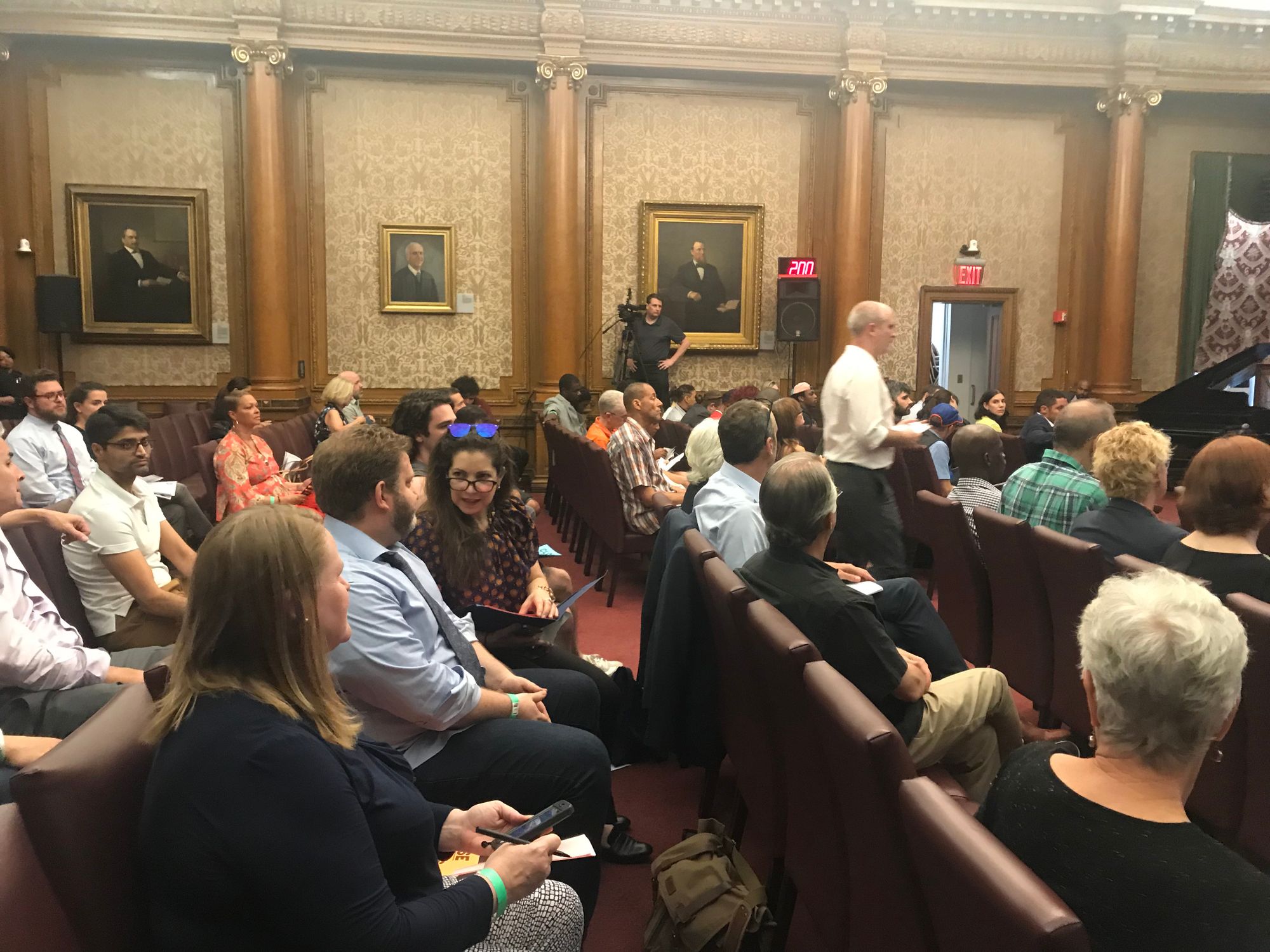Borough President Holds Second Hearing On Brooklyn Jail Plan

DOWNTOWN BROOKLYN – Yesterday, on the anniversary of Kalief Browder’s death after being held on Rikers Island for three years, dozens of Brooklyn residents gathered at Brooklyn Borough Hall to let Borough President Eric Adams know how they felt about the city’s ULURP proposition to expand a jail at 275 Atlantic Avenue. The land-use proposal is part of a bigger plan to close Rikers Island by 2027 and replace it with more humane borough-based jails.

In May, Community Board 2 members voted “no” on the land-use recommendation at a meeting flooded with protesters staunchly opposed to Mayor de Blasio’s plan to build borough-based jails in four of the five boroughs (Brooklyn, The Bronx, Manhattan, and Queens). For the Brooklyn site, the city proposes to create a new 395-foot-tall building with 1,437 beds in a vertical facility that will sit atop 30,000 gross square feet of retail and community space.
For two and a half hours, resident after resident took the podium to state their case either for or against the land-use proposal. Speakers, who included former Rikers inmates, organizers from both Close Rikers Now and No New Jails, lawyers, social workers, and dozens of other locals, were allowed two minutes each to testify. Eric Adams left mid-way through the meeting, citing he had other obligations.
Almost all speakers believed Rikers needs to be closed down; where opinion differed is whether these specific borough-based jails are the solution.
Deputy director of the initiative to close Rikers at the Mayor’s Office of Criminal Justice, Dana Kaplan said the plan is “fundamentally a decarceration effort.”
“We believe this is the largest shrinking of a city jail system in U.S. history,” she said. “Right now we have a historic moment in our city, where we have the opportunity to lead the way on criminal justice reform and lead the way in justice and safety for all New Yorkers.”
Many community members who supported the plan did so with stipulations, saying the community should vote yes on the land-use proposal in order to fast-track the closing of Rikers, but the new jails need to be smaller and offer more alternative sentencing programs and youth programs.
“I served 19 months of hell on that penal colony. I support the plan to go from 12 jails across our city down to four borough-based facilities—unlike anything we’ve seen before—but with important conditions that will improve the plan,” community member Darren Mac said. “Any delay or opposition to move forward with this plan is a vote to keep Rikers open.”
Ten-year-old Ethan Prayor approached the podium holding his mothers hand to say that he, too, supports the closing of Riker and building of borough-jased jails. “I don’t want to be the next Kalief Browder,” he said. The first applause of the night took place after his statement.
Brooklyn Heights resident Quinn Raymond used his time to suggest that those who oppose the land-use proposal have ulterior motives. “Local opponents of the new facility have been disingenuous in their engagement. They have framed their opposition of the proposed jail in the language of social justice but their own self-interest is the obvious motivation as evidenced by their substantial investment of $11,300 in a professional lobbyist who is sitting here today. I love my neighbors but we have to stop doing this. If you’re upset about zoning and height, be upset about zoning and height, but don’t pretend that you care about the people who are locked up on Rikers Island because it seems disingenuous. Think for a second about the impact your decision and your own activism has had on people with a lot less power than you.”

Opponents of the plan fear that the government will build skyscraper jails with far more beds than necessary and potentially not shut Rikers down. Many community members reiterated that this specific land-use proposal says nothing about shutting Rikers, so New York City could end up simply building more cells without closing any.
Justin Cohen urged people to think about why spending $11 billion on 6,000 more jail cells is decarceration. “The city is trying to sell this plan as progressive and I understand why they are doing it but it’s a lie,” he says. “There is no progressive way to reestablish a system of mass incarceration in a city for another generation. One hundred years ago they said they would close Blackwell and replace it with something better—that something better was Rikers Island.”
Community member Scott Jacobs said that it’s almost unanimous that Rikers should be closed but added the city has not been upfront with the jail population, thus voting on the recommended sizes for the facilities is a bad idea. “Why is this mayor tone deaf?” he asked.
Community member and lawyer King Downing brought up the distinct race divide between those who supported the land-use bill and those who didn’t, and although he knows there are flaws in the land-use proposal, he supports it because he wants to see Rikers closed as soon as possible. “Do you really, really believe that the stories you’ve heard about the [formerly incarcerated] could have you do anything but push the pedal to the metal on this plan? I’m an abolitionist. I think jails and prisons should be dismantled, but we have to have an immediate step. We can’t just leave people there while we figure out what the final plan will be.”
After the meeting ended, opponents left chanting “no new jails” in the halls.
Thursday’s meeting was the final in Brooklyn regarding the Mayor’s borough-based jail plan. The next step in the ULURP process: a City Planning Commission hearing to discuss all four proposed new jails.




